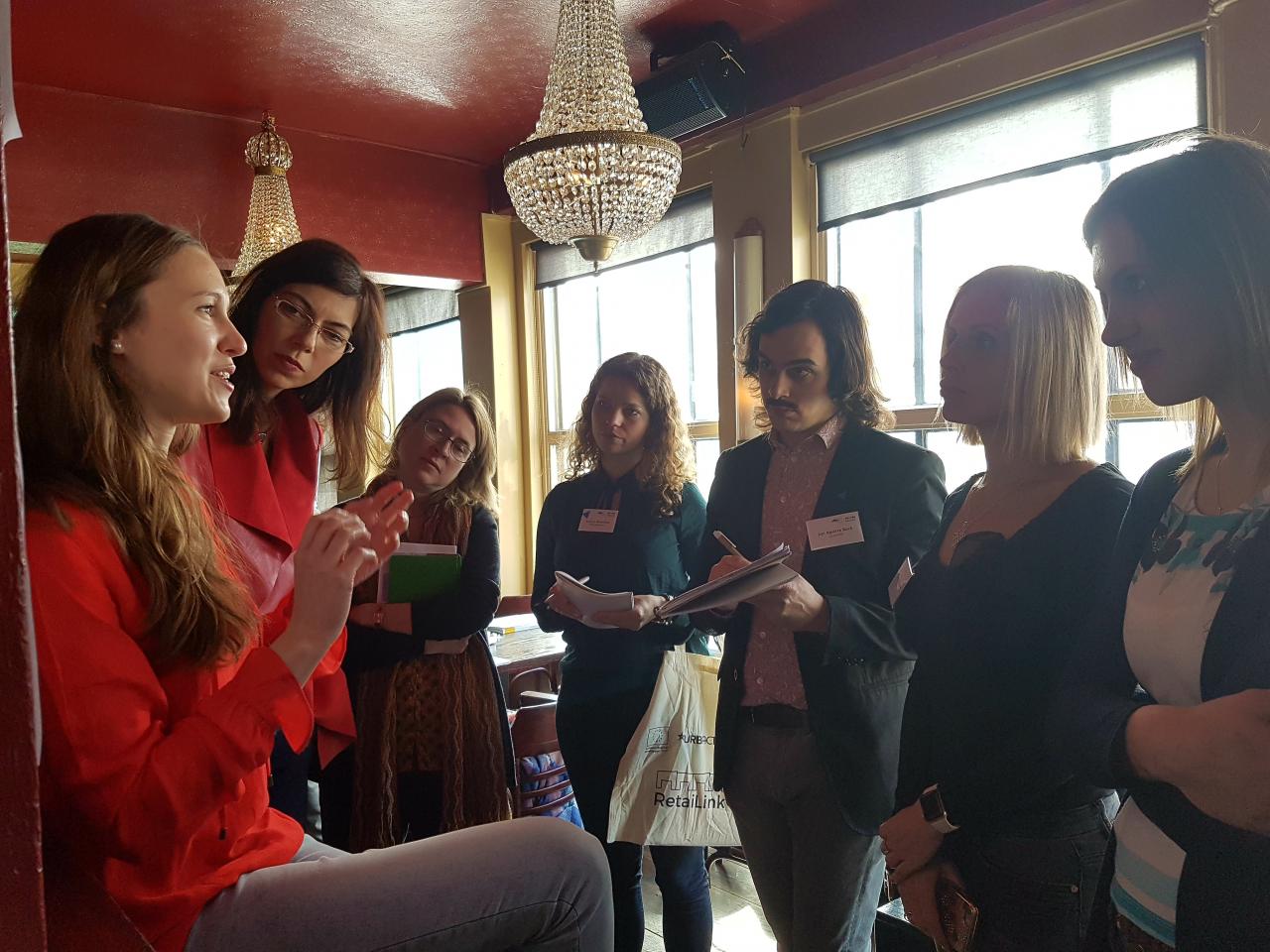
During 2 years, ten medium-sized European cities have been working together to improve each one’s local retail sector, by adopting a more holistic approach, and involving key stakeholders. Each URBACT Local Group has been exchanging perspectives on ways to reshape their city's retail propositions to make them more attractive, and in line with the local consumers’ needs and expectations. Discover the resulting Integrated Action Plans in this article.
As a result of RetaiLink's dynamic learning and planning process, each of the ten cities have developed Integrated Action Plans that are expected to:
· Enhance the competitiveness of small independent retail businesses and increase retail turnover
· Generate economic activity within the retail sector and related business activities, like hospitality
· Retain and improve employment
· Persuade the local population to shop locally rather than going elsewhere, and attract consumers from a larger catchment area
The overarching aim is to contribute to reinvigorate each city using retail as a means to achieve bigger goals, since retail is a natural trigger factor of social relations and urban life.
In this video, you can meet each partner city's Action Plan, introduced by the RetaiLink project managers.
Check out each city's infographic with the main context, challenges and goals of each partner Action Plan. If you want to learn more, don't miss the summaries.
> Igualada (Lead Partner - Spain)
Igualada’s final aim of the project is to agree on a strategy setting the relevant actions to revitalise the retail sector and the city economy as a whole, using an integrated and participative approach.The vision is to make the city of Igualada a Catalan retail destination, combining retail and leisure offering a unique, specialised and differentiated offer.
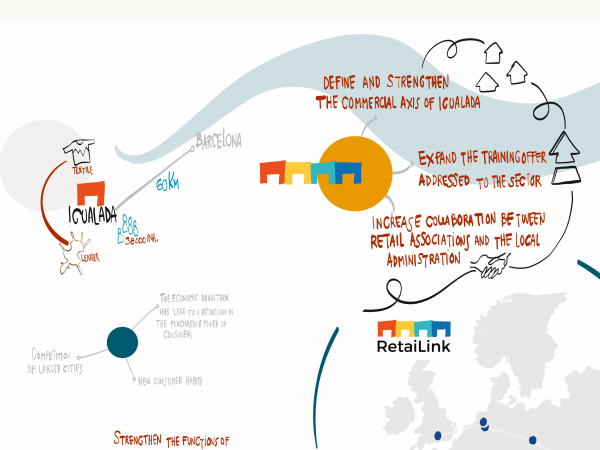
Download the summary here:
> Bistriţa (Romania)
The vision for the development of Bistriţa is built around the framework of general objectives for development of the region for 2014-2020. Bistriţa's vision is a modern city, with a competitive and innovative economy, making good use of the historical and environmental resources of the cities, with a high quality of life for citizens and supported by a vibrant and involved community of citizens. The activities required to reach the operational objectives are divers and systemic, from new rules for public events, enhanced urban furniture, development of road map for social media and other promotion, models and support for street design, and a new urban action plan update.
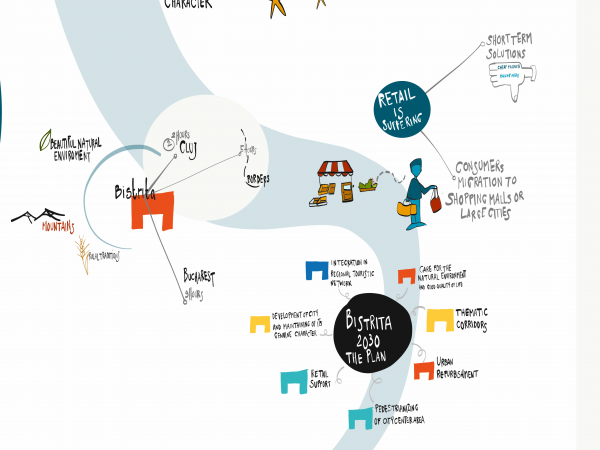
Download the summary here:
> Fermo (Italy)
The key challenges for the City of Fermo are to increase the daily footfall in the city centre, its attractiveness and make the historic centre more vibrant through joint actions by retailers, leisure and cultural activities that can add value for both tourists and residents.
Fermo should be the main attraction pole given its territorial context, so ways must be found to increase the value of doing business in the city, together with a wider approach to boost the economy of the entire territory. Its historical industrial activities linked to “Made in Italy” shoes, hats and fashion products and the excellent agro-food production represents a good start. To build on this, it is of a paramount importance for the Municipality to help create investors’ confidence, starting with retailers who can promote the city centre as a space for a rich and diversified experience including shopping and the full enjoyment of Fermo’s cultural and artistic city heritage.
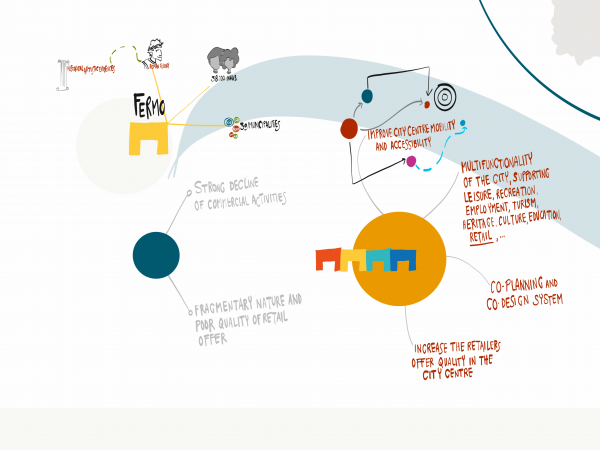
Download the summary here:
* Fermo's plan was the winner at RetaiLink's final meeting, were it received the awards for the best plan from the perspective of project coordinators, ULG coordinators, politicians and retailers from all the partner cities.
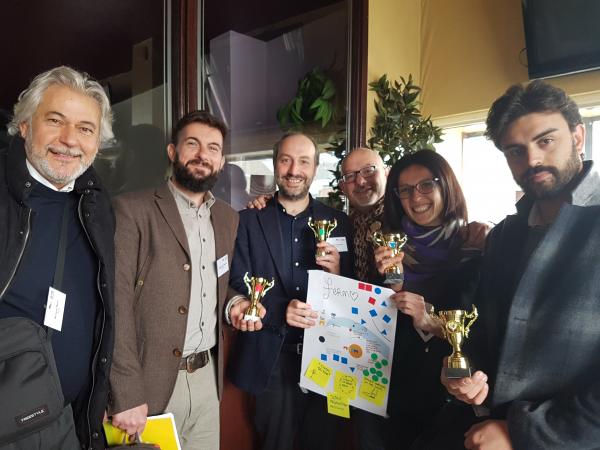
> Liberec (Czech Republic)
The vision of Liberec for the city centre is a prosperous, lively centre with competitive and stable retail.
An attractive public space with low traffic and interesting cultural programmes, where the residents want
to spend free time and come for shopping and entertainment. It is also expected that the city centre
becomes a popular residential area.
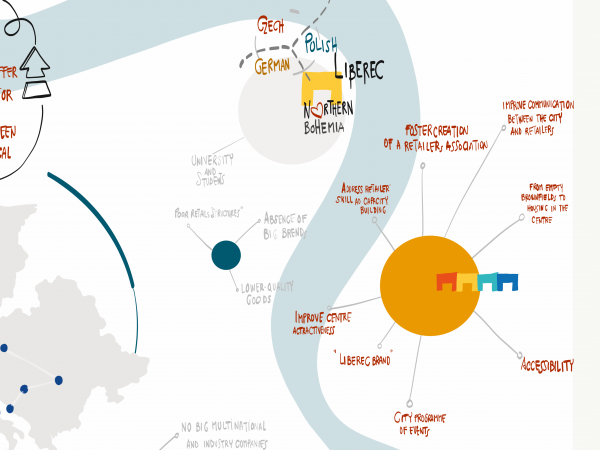
Download the summary here:
> Hengelo (the Netherlands)
The ambition of Hengelo's URBACT Local Group is to achieve a result described as follows: A vital inner city with Hengelo’s character, which has an eye on the Dutch past and looks to the future. An inner city where visitors love to come and residents and business owners are proud of because there is a distinctive and diverse offer and because there is a fine, safe and cozy atmosphere.
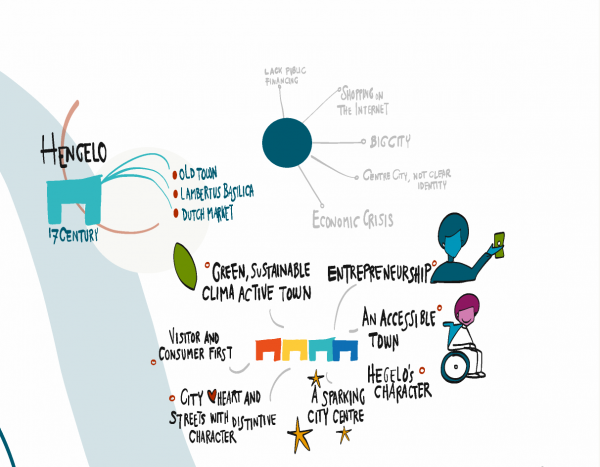
Download the summary here:
* Representatives from Liberec, Pécs and Fermo discover Hengelo's plan for the city centre
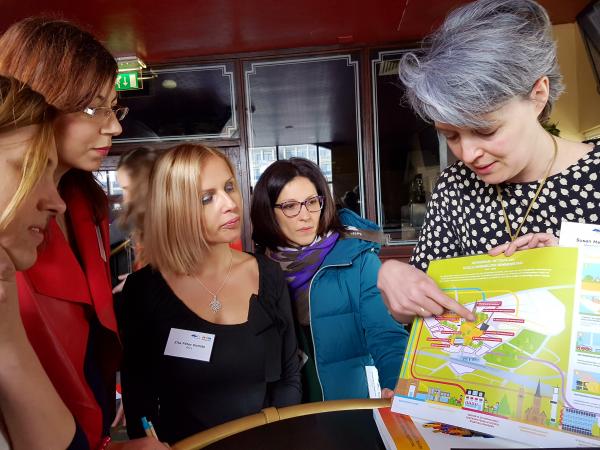
> Hoogeveen (the Netherlands)
With the renewed vision and the IAP, Hoogeveen expects to impact on a range of different aspects. In a nutshell, the IAP will contribute to positioning Hoogeveen as an attractive city in which to work, buy and live: “We want to achieve a more vital and viable city centre, by making it become a more compact, attractive and feel-good city centre, based on the city DNA.” The renewed vision is an integrated plan and links to all of the relevant policy areas such as sustainability, mobility, culture, recreation and tourism, among others.
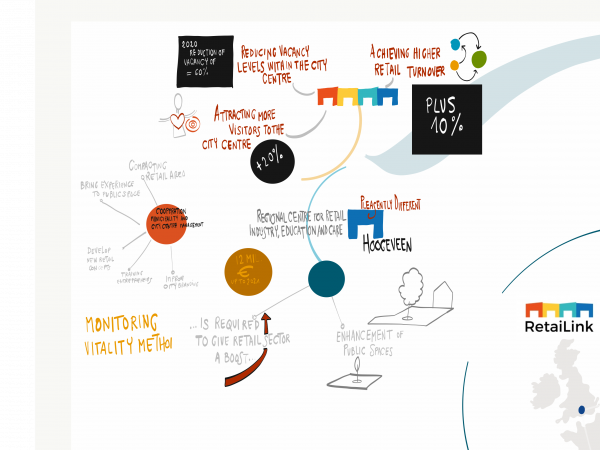
Download the summary here:
> Romans (France)
Romans' plan wishes to define where is the “city centre” in consultation with the area users, then make this area more attractive and increase footfall. Another objective is to refill the empty retail units with activities that also contribute to offer a strong identity, matching the expectations of the users. The revitalization will be done with a view of sustaining the dynamism for the long-term.
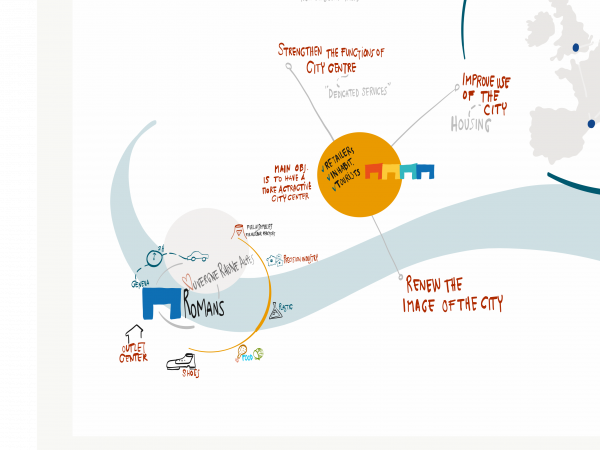
Download the summary here:
> Šibenik (Croatia)
At the moment, the old city centre of Šibenik is not recognized as a quality retail destination and it has large seasonality gap in demand between summer and winter months. The IAP's vision is that the old city centre of Šibenik will become an attractive place for doing business, shopping and spending leisure time for citizens and visitors.
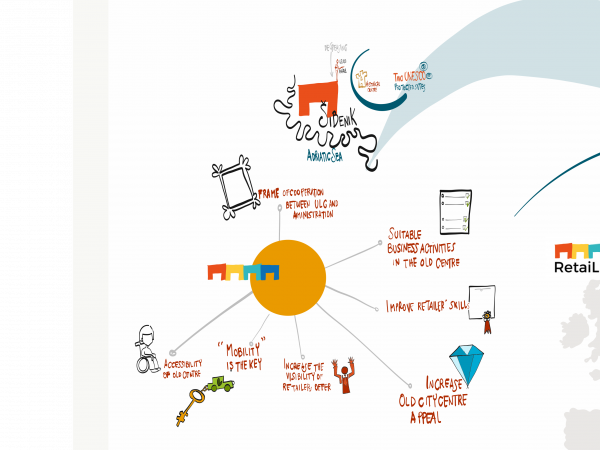
Download the summary here:
*Sibenik's IAP was recognized with an award from RetaiLink partners for being the plan with the best communication strategy.
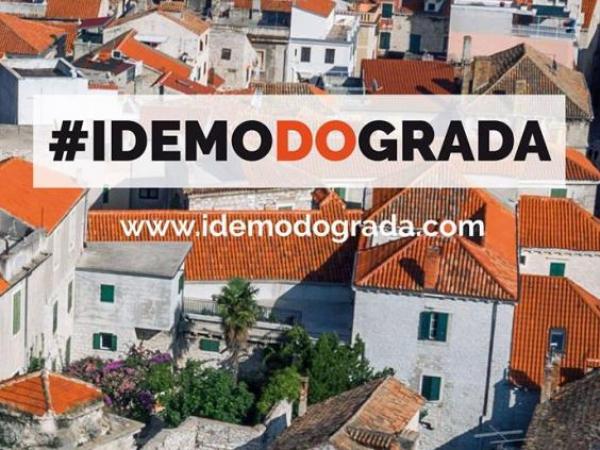
> Pécs (Hungary)
Pécs URBACT RetaiLink team’s vision is that Pécs city centre will be packed with people, both citizens, university students from different countries and regions as well as tourists. People won’t only walk around in the city centre and sit in the benches of Széchenyi square but will also shop around in the stores and eat and drink in bars and restaurants located in the city centre. Visitors will stay longer and both citizens and tourists will spend more money in the city-centre than they do nowadays. All the buildings in the city centre will have been renovated and the beauty of the historic centre will stand out for all to see. The centre of Pécs will not have any vacant stores anymore or big business fluctuation. Storeowners and renters will increase their turnover and thus will be satisfied with the new situation.
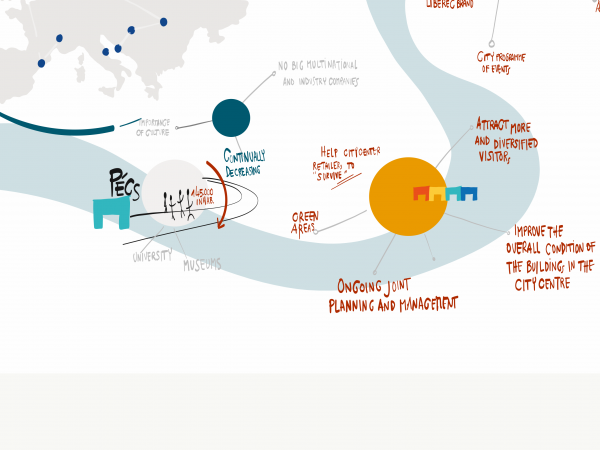
Download the summary here:
> Basingstoke (UK)
Basingstoke has the vision of a thriving town centre recognised as a regional retail, leisure and cultural destination offering a unique and quality experience through high levels of occupation, a quality mix of retailers and a diverse cultural offer. The strategic aim of the IAP is to make Basingstoke’s town centre a destination recognised for the quality of its experience and of its retail, cultural and leisure offer.
![]()
Download the summary here:

